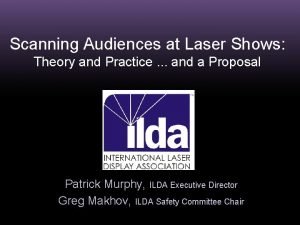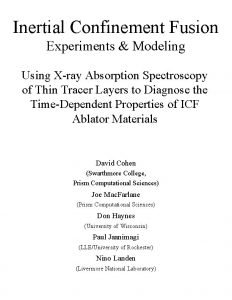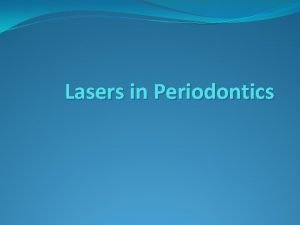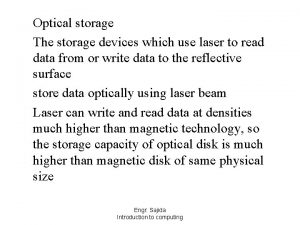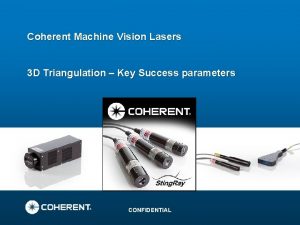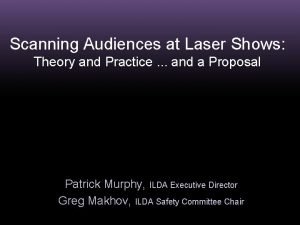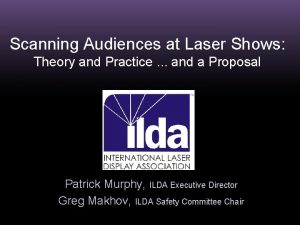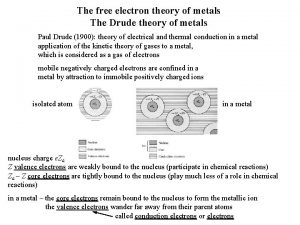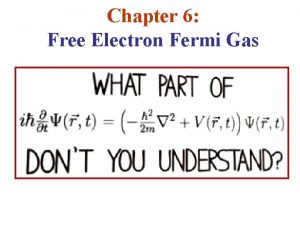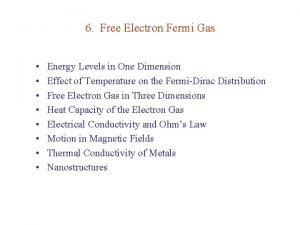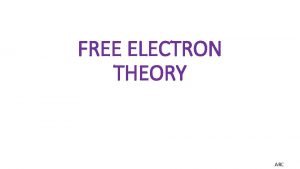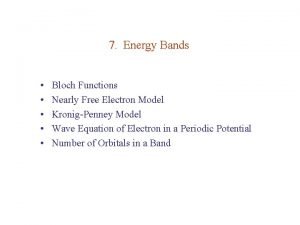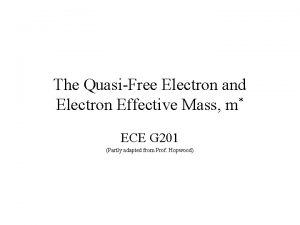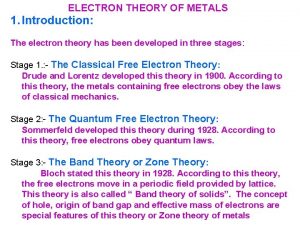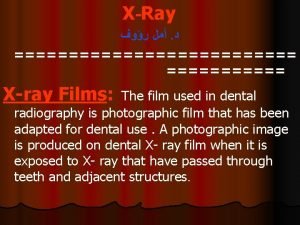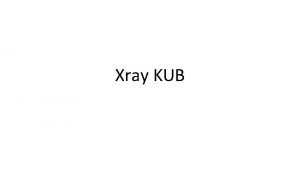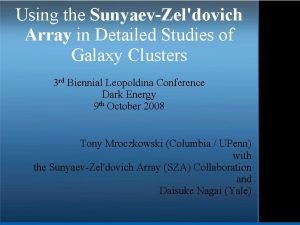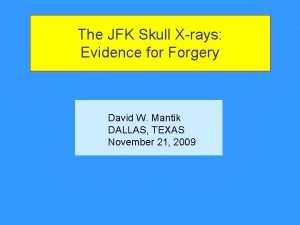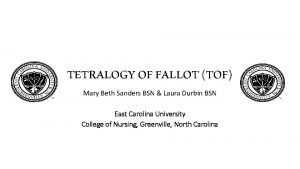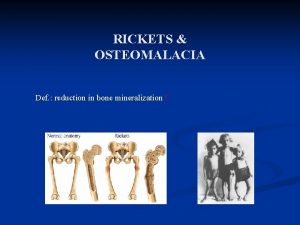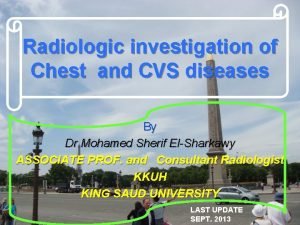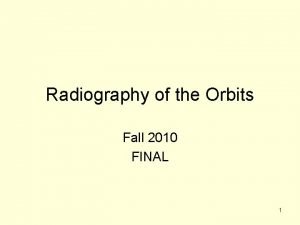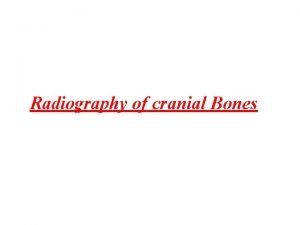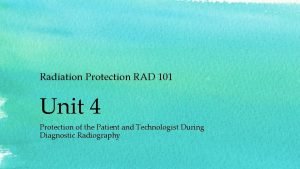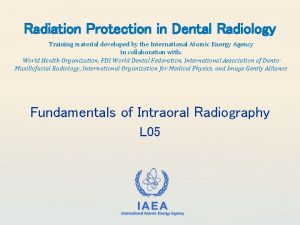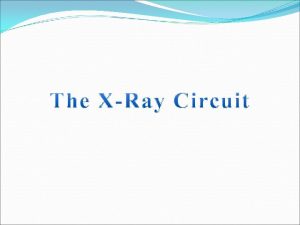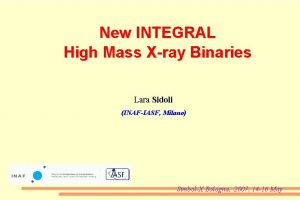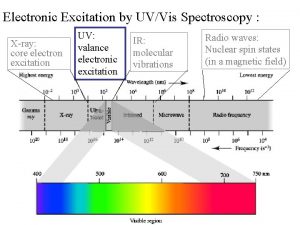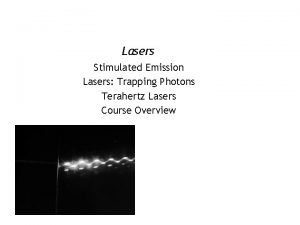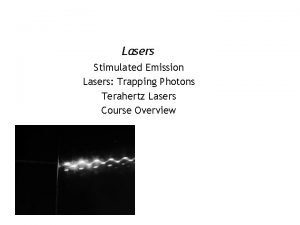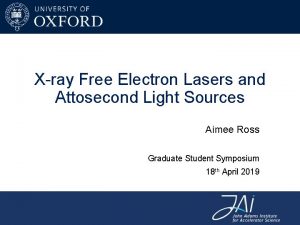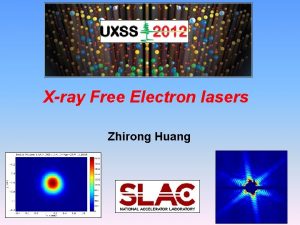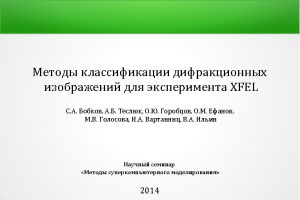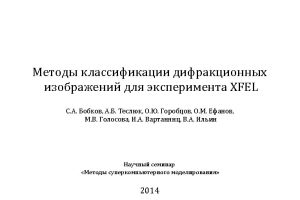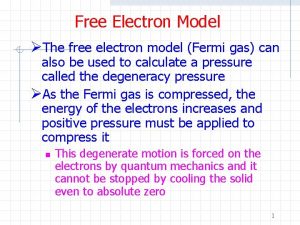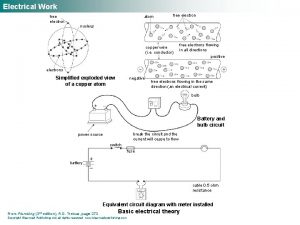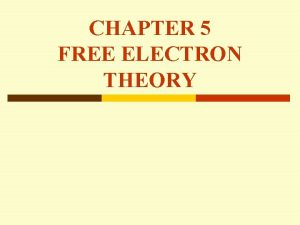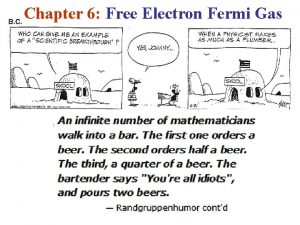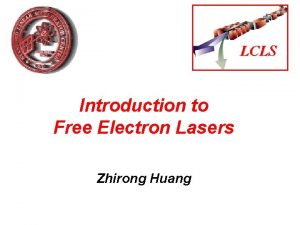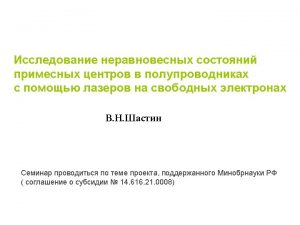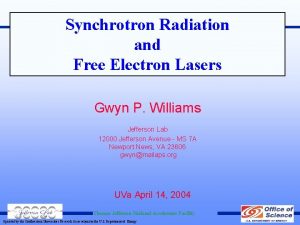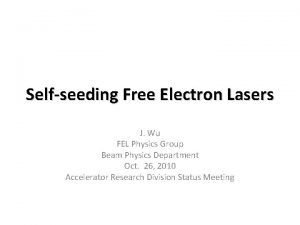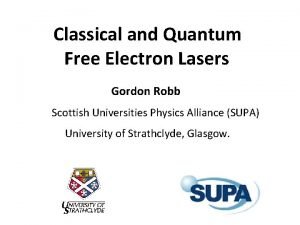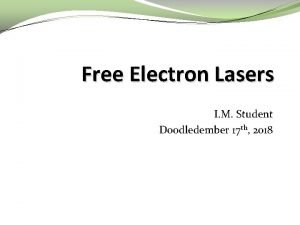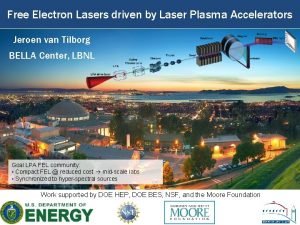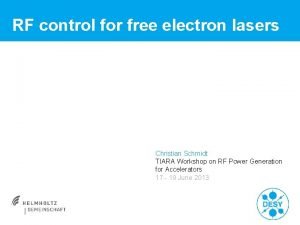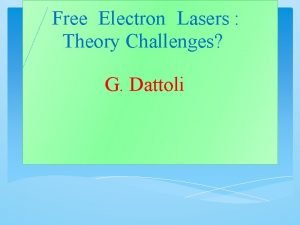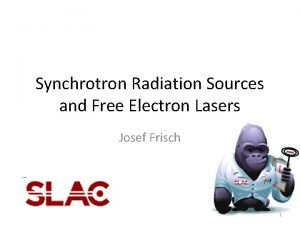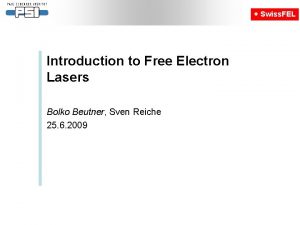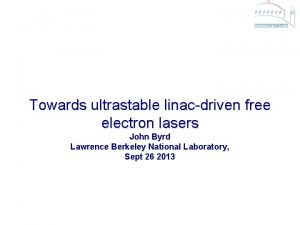New Science Opportunities with Xray Free Electron Lasers

































- Slides: 33

New Science Opportunities with X-ray Free Electron Lasers (FEL) • What are X-ray FELs • Current UK position • Science with X-ray FELs • Developing a national capability Jon Marangos Imperial College Physics Department

X-ray FEL Using Coherent High Brightness X-rays From SASE (Self Amplified Spontaneous Emission) Undulator Input Low emittance, relativisitic electron bunch 5 – 15 Ge. V E/E < 10 -3 • High Photon • Pulses < 10 fs Number • Narrow spectral bandwidth • Short pulses • Wide tuning range with multi-ke. V • Unmatched photons for structural methods (e. g. brilliance XAS, IXS, X-ray diffraction) • Exceptional available brightness • High peak flux on target Output High brightness, short pulse of coherent soft to hard X-rays Nine orders of magnitude 2

X-ray SASE Free Electron Lasers 2009 Hard X-ray projects LINAC COHERENT LIGHT SOURCE LCLS 2012 SACLA SPring-8 Compact SASE Source 2017 European XFEL Facility Euro XFEL SLS KOREA FEL

New High Repetition Rate Superconducting Machines Will Be Even More Transformative XFEL in Hamburg: A High Rep Rate SASE Machine ~ 10, 000 shots per second LCLS II Existing 120 Hz machine to 20 ke. V + High rep-rate (100 k. Hz to 1 MHz) 250 e. V – 5 ke. V machine JPM & RW led UK NLS project with a CDR published in June 2010. Passed peer review and remains one of the UK’s highest priority large capital scientific projects awaiting funding approval. Ongoing discussion on UK FEL strategy

The Current UK Landscape The current UK XFEL community is small but very effective – 20 PIs, and ~80 active researchers based at 12 different institutions. They have been using the facilities at LCLS, FLASH, SACLA, and FERMI to investigate: • • • protein structural dynamics nanocrystal protein structures matter at extreme conditions (solids and plasmas) fast modifications to metals time resolution of prototypical photo-chemical reactions ultrafast electron dynamics in molecules

Current UK position • STFC: The UK has committed to becoming a full member of the European XFEL facility (now under construction near Hamburg, Germany). A review has been undertaken that will provide the framework for making decisions on any further FEL commitments that the UK may make. • UK is part of the Helmholtz International Beamline for Extreme Fields (HIBEF) and the Serial Femtosecond Crystallography (SFX) beamline consortia at XFEL. EU. o UK’s contribution to HIBEF is the Di. POLE laser, funded by STFC and EPSRC at ~£ 4 M each, with its operation costs yet to be confirmed. o UK will contribute £ 5. 6 M to the SFX beamline, through BBSRC, MRC and the Wellcome Trust.

In was recognised that STFC needs to develop a coherent strategy for facility provision – including FELs Set up a review panel that: • identified key science challenges that would benefit from access to a FEL facility • considered the ability of existing and near-future FEL facilities to address these science challenges. • proposed a 7 year strategy for FEL access, UK FEL facility provision, community development, and underpinning technology/skills. • Proposed a 15 – 20 year vision for UK FEL science Courtesy of Malcolm Mc. Mahon

A UK FEL Strategy: UK FEL Forum Position Doing nothing is not an option. Support and grow the FEL science community so that UK can be competitive across broad areas of science o Invest in current and near-future facilities internationally o Attract new researchers via studentships, travel grants, fellowship calls, and a cross-RC CDT o Targeted project funding from the relevant RCs for travel, equipment and postdocs o Re-engaging communities associated with previous proposals for UK FEL facilities.

A UK FEL Strategy: UK FEL Forum Position Meeting the UK’s long term needs may require constructing an X-ray FEL facility in the UK o Even if the UK maximises its opportunities for access elsewhere, the UK’s demand may exceed this level in <10 years o In the long term, the UK’s capacity requirements may be best served by constructing a UK-XFEL facility o To address the majority of key science challenges, a UK facility would need to deliver hard X-rays. o Ideally it would have a high (MHz) repetition rate. However, this is likely to be costly as a national facility. A compromise specification may need to be defined to fit UK science.

Frontiers In Science for the Mid-21 st Century Include • Understanding the structural dynamics of physical, chemical and biochemical processes at the atomic scale: Making molecular movies • Controlling quantum scale processes in matter: Directing electronic dynamics, information and energy flow • Sub-nanometre scale imaging of arbitrary objects in their native state: Capturing the structure of an individual living cell or nanostructure

The science calls for: ULTRAFAST HIGH BRIGHTNESS HIGH REP-RATE X-RAY photon sources. X-ray FELs are uniquely suited

Current X-ray FEL Science Highlights • Structural dynamics • Matter at extreme conditions • Nanostructure imaging • Serial nano-crystallography

Incisive structural probes such as time resolved X-ray spectroscopy and diffraction are key to this science • UV/IR/THz pump (including optimally shaped control pulses) • Ultrafast X-ray probes e. g. XAS, XPS, RIXS, XRD to give instantaneous structure during chemical reactions and condensed matter changes Capture time evolution: Structure Electronic states Spin states

Time Resolving Chemical Reactions Catalysis and chemistry in solution phase: “Orbital-specific mapping of the ligand exchange dynamics of Fe(CO)5 in solution” Nature 520, 78 (2015) “Tracking excited-state charge and spin dynamics in iron coordination complexes” Nature 509, 345 (2014) Time resolving surface catalysis Science 347, 978 (2015) Fundamental events in chemistry: “Ultrafast X-ray Auger probing of photoexcited molecular dynamics” Nature Comm. , 1038 (2014) “X-ray induced ultrafast isomerization acetylene - vinyldiene” Nature Comm. , 6, 8199 (2015)

Time resolving phase changes in strongly correlated materials Light control of quantum solids (THz pump – X-ray probe): Field induced high temperature superconductivity? Femtosecond dynamics of long range order: coupling of; lattice, spin, charge and orbitals

Matter at extreme conditions Measuring highly transient states: “Direct observation of melting in shock compressed bismuth with fs X-ray diffraction PRL 115, 095701 (2015) Probing laser generated warm dense matter: “Ultra-bright X-ray laser scattering for dynamic Warm dense matter physics” Nature Phot. 10, 1038 (2015) Probing hot dense matter: Nature Communications 6, 6397 (2015) Phys. Rev. Lett. 114, 015003 (2015) Nature Communications 5, 3313 (2014) Phys. Rev. Lett. 109, 245003 (2012) Phys. Rev. Lett. 109, 065002 (2012) Nature 482, 59 (2012)

Imaging the dynamics of individual nanostructures “Imaging transient melting of a single gold nanocrystal” PNAS 112, 7444 (2015) “Ultrafast 3 -D imaging of lattice dynamics individual gold nanocrystals” Science 341, 6141 (2013) Nanoscopic imaging single biological organisms: “ 3 -D reconstruction of the giant mimivirus particle with X-ray FEL” PRL, 114, 098102 (2015) “High throughput imaging of heterogeneous cell organelles with an X-ray FEL” Nature Phot. 8, 943 (2014) “Imaging single cells in a stream of live cyanobacteria… “ Nature Comm. (2015)

Non-crystal samples destroyed before signal enough to image “Diffract and Destroy” possible if pulse very short and very bright

“Diffract and Destroy” has been applied to protein nanocrystals with 20 fs X-ray pulses first demonstrated 2011 Kuptiz et al, Nature 513, 261 (2014)

Serial nanocrystallography is a promising development in structural biology

Applications to medicine Tb. Cat. B protein of the Trypanosoma brucei protozoan – critical agent in sleeping sickness Applications to neuroscience “Architecture of the synaptotagnmin. SNARE machinery for neuronal exocytosis” Nature 525, 62 (2015)

What do we need if we build a national facility to do this science? • Broad photon tuning capability: photons from 100 e. V to > 10 ke. V • Versatile configuration: Synchronised laser sources, X-ray double pulse, seeded • High peak brightness: >1012 photons pulse for “diffract and destroy” of single molecules • High repetition rate: ARPES, RIXS etc. demand low intensity on target so need to have many pulses for SNR

What will we need to do to enable this? • Develop a fully coordinated FEL R&D programme, building upon existing expertise in the following areas: o accelerators; o detectors; o lasers and auxiliary light sources; o diagnostics; o sample environment and target delivery; o simulation, control, data acquisition, data analysis, and storage.

To build a uniquely capable facility • Need to overcome existing limits on pulse synchronization, coherence and pulse shape • Can we develop a high rep-rate hard X-ray machine cost effectively? e. g. taking lessons from compact FEL projects like SACLA and Swiss FEL and adopting new technologies like super-conducting undulators

SASE: Wavelength Fluctuation and Temporal Jitter Temporal (+/- 100 fs) jitter inhibits: - Synchronisation with external sources - High temporal resolution measurements - Quantitative non-linear interaction studies Wavelength fluctuation inhibits: - X-ray spectroscopy - Inelastic scattering - Chemically sensitive CDI Ultrafast structural dynamic measurements at the femtosecond timescale need to overcome these limitations

Atomic Inversion Laser Rohringer, N. et al. Nature 481, 488– 491 (2012). Results in a fixed wavelength but hard to do……. .

Injection Seeding courtesy of Fulvio Parmigiani Not viable for hard X-rays…. .

Self Seeding: Eliminates Wavelength Jitter courtesy of Jerry Hastings Promising and fixes wavelength jitter, but not temporal jitter…….

Time Stamping Courtesy of Ryan Coffee X-ray gated reflectivity Using chirped pulse for single shot timing measurement – Sub 20 fs resolution demonstrated Combined with self seeding this might just do, but still need higher rep-rate to overcome fluctuations (in self seeding spectral fluctuations transferred to intensity fluctuation)….

X-ray FEL Measurement of Few Femtosecond Electron Dynamics LCLSpulses are generated LCLS with “low bunch charge” operation ~ 3 fs X-ray with ~ 1011 photons/pulse Several options are currently used at LCLS for few-fs resolved pump - probe • X-ray Split and delay • Two-pulse generation at single frequency • Two-pulse / two-colour generation SACLA XFEL

• Two bunch mode Slot 1 Bunch 1 Slot 2 Bunch 2 time • XTCAV From Marinelli et al Nature Communications (2015) X-ray power Electron current After undulator time τ

What do we need if we build a national facility to do future science? • Laser-e-beam modulation: Slicing and seeding schemes to get ~ 1 fs level laser-X-ray synchronization – structural dynamics • Attosecond pulses: Push the limits on pulse duration in two-pulse mode towards 100 as – electron dynamics • Multi-colour operation: Synchronised X-ray pulses of very different and tuneable photon energy would be revolutionary – multi-dimensional spectroscopy for structural and electron dynamics • Synchronised e-beam: Relativistic electron beam + XFEL pulse experiments would be a unique capabilityradiobiology and structural dynamics

Thank you for your attention
 Characteristics of lasers
Characteristics of lasers Audience scanning
Audience scanning Inertial confinement fusion lasers
Inertial confinement fusion lasers Gingivectomy
Gingivectomy Storage device that uses lasers to read data
Storage device that uses lasers to read data Machine vision lasers
Machine vision lasers Audience scanning
Audience scanning Audience scanning lasers
Audience scanning lasers Favourite subject
Favourite subject Postulates of free electron theory
Postulates of free electron theory Fermi function
Fermi function Free electron gas
Free electron gas Free electron gas theory resumes
Free electron gas theory resumes Nearly free electron theory
Nearly free electron theory Quasi electron
Quasi electron Success of classical free electron theory
Success of classical free electron theory New entry exploitation
New entry exploitation X ray mastoid towne's view position
X ray mastoid towne's view position The purpose of a lead foil sheet in the film packet is
The purpose of a lead foil sheet in the film packet is Kub xray
Kub xray Xray xml editor
Xray xml editor Sza xray
Sza xray Jfk xrays
Jfk xrays Tetralogy of fallot xray
Tetralogy of fallot xray Osteopenia of prematurity ppt
Osteopenia of prematurity ppt Pulmonary embolism cxr
Pulmonary embolism cxr X ray orbit
X ray orbit Skull and wings
Skull and wings Xray technique chart
Xray technique chart Double exposure xray
Double exposure xray Xray circuit
Xray circuit Xray lara
Xray lara Subject contrast
Subject contrast Uv xray
Uv xray

